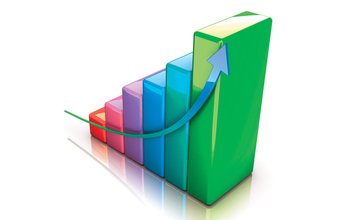
Growth in total new orders was supported by stronger sales from international clients. Furthermore, the rate of expansion was the most pronounced since September 2016 and marked overall. Amid reports of delayed payments, outstanding business continued to rise during January. That said, the rate of backlog accumulation eased to a marginal pace.
In response to improved demand conditions, firms raised their staffing levels during January. However, the pace of job creation eased to a modest pace that was the weakest since last October.
In response to greater output requirements, firms increased their purchasing activity in January.
Despite easing from December, the rate of growth was solid overall. According to anecdotal evidence, firms were encouraged to engage in input buying due to stronger demand conditions.
Manufacturers faced higher inputs costs during January. The rate of input cost inflation was broadly similar to December's eight-month high but remained below the long-run trend. Panellists associated greater raw material prices with stronger levels of demand. As has been the case since last August, manufacturers raised their average selling prices. That said, charge inflation eased to a marginal rate.
Business conditions improve, but at a slower pace January's survey showed manufacturers retained positive projections for output over the next 12 months. That said, the level of positive sentiment remained weak by historical standards.
Comment: Commenting on the Indian Manufacturing PMI survey data, Aashna Dodhia, Economist at HIS Markit and author of the report, said: "Following December's stellar performance, growth in the Indian manufacturing economy lost some impetus, reflected by slower growth in output, new orders and employment. Nevertheless, these key PMI indicators registered in expansion territory signalling the sector stayed on its track to recovery.
"There were reports of improvements from both domestic and foreign markets. Encouragingly, new export orders increased at the strongest pace since September 2016. A revision on rates of duty drawbacks on 102 items is expected to enhance India's international competitiveness, and possibly translate into stronger overseas demand over the coming months.
"On the other hand, the Goods and Services Tax (GST) somewhat continues to remain a risk to business performance as firms faced further delayed payments.
"On the price front, higher input costs continued to exert pressure on firms' margins as manufacturers were reportedly unable to fully pass on higher cost burdens to customers that remained reluctant to spend."
Sources: Nikkei, IHS Markit
Ends


























